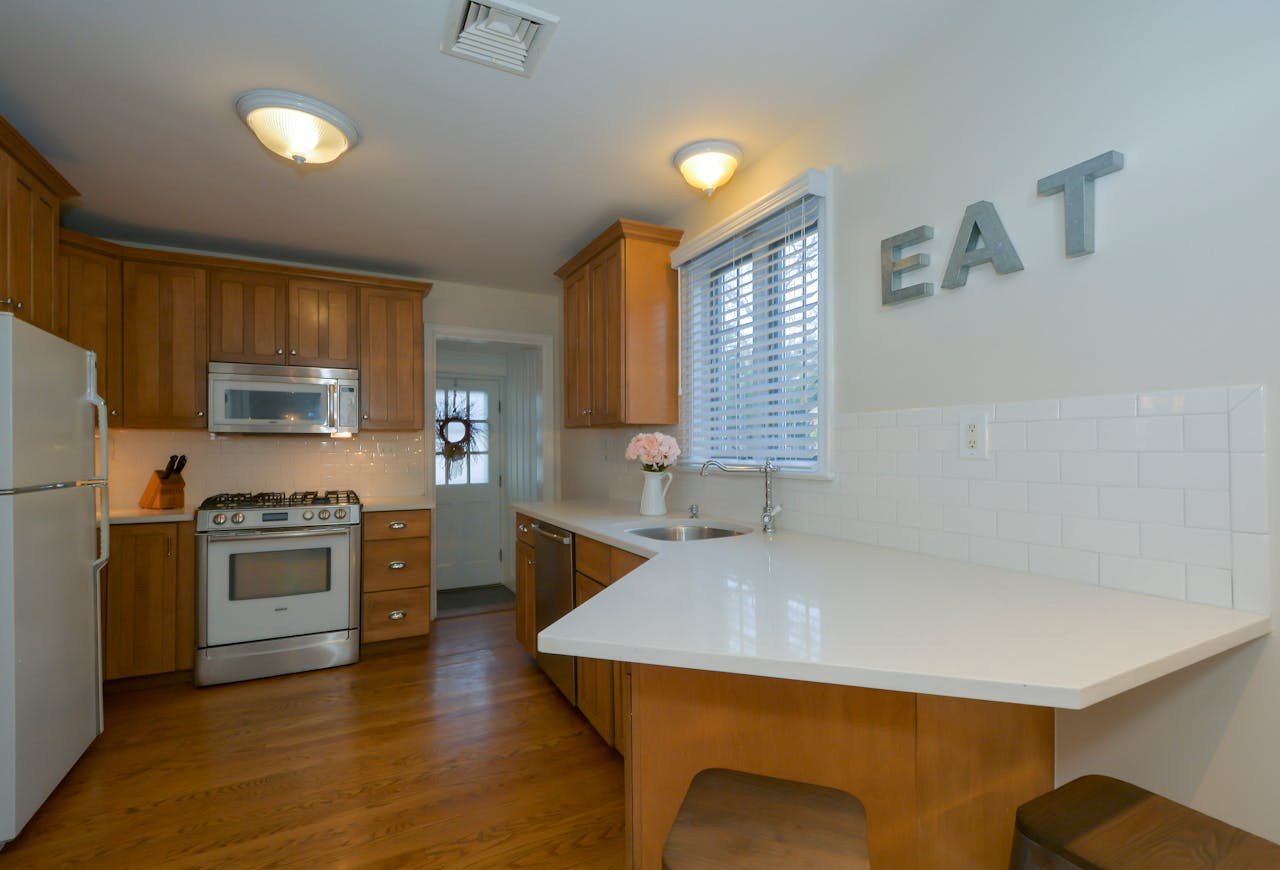It’s a well-known fact that the design of your kitchen can influence your eating habits. Whether it’s the location of your fridge or the size of your plates, small changes in your kitchen’s layout can have a significant impact on your eating habits. This article will explore how to design your kitchen to promote healthier eating and discourage unhealthy snacking.
The Impact of Your Kitchen Design on Eating Habits
The design of your kitchen plays a crucial role in influencing your eating habits. A study published on PubMed revealed that people who keep unhealthy snacks in visible places are more likely to consume them frequently. Similarly, a research article on PMC stated that the proximity of food can manipulate people’s eating behaviors.
Additional reading : How effective is using a kitchen scale in tracking calories for weight management?
The findings from these studies show how the design of your kitchen can either support or sabotage your healthy eating goals. By making small changes in your kitchen’s layout, you can create an environment that discourages unhealthy snacking and promotes healthier alternatives.
Creating a Healthy Snack Zone
One effective way to discourage unhealthy snacking is by creating a healthy snack zone in your kitchen. This zone should be easily accessible and filled with nutritious snacks like fruits, vegetables, and nuts.
In parallel : Can installing a kitchen island improve your meal preparation for weight loss?
A study conducted in several schools found that students were more likely to choose healthy snacks when they were displayed at eye level. Similarly, you can implement this strategy at home by placing healthy snacks in visible and easy-to-reach places. Store unhealthy snacks in opaque containers or out of reach to discourage their consumption.
Making Use of Smaller Plates and Bowls
Portion control is crucial when it comes to maintaining a healthy diet. Using smaller plates and bowls can help you manage your portions better and avoid overeating.
Research published on Google Scholar suggests that people tend to fill their plates regardless of its size. Hence, by using smaller plates, you can trick your mind into thinking you’re eating more than you are, thereby reducing your calorie intake.
The Layout of Your Kitchen
The layout of your kitchen can also influence your eating habits. For instance, placing your fridge or pantry far from your dining area or workspace can discourage mindless snacking.
Moreover, keep your kitchen clean and clutter-free. A cluttered kitchen can cause stress, which can trigger emotional eating. Try to create a calming and inviting atmosphere in your kitchen to encourage mindful eating.
Reinventing Your Kitchen Environment
Lastly, your kitchen should be a place that encourages mindful eating and not mindless snacking. Reinvent your kitchen environment by adding elements that promote mindfulness and healthy eating habits.
For instance, you can play calming music during meal times or use aromatic herbs and spices that stimulate your senses and make eating a more enjoyable experience.
You can also paint your kitchen walls with cool colors like blue, green, or purple. According to color psychology, these colors are less likely to stimulate your appetite compared to warm colors like red, orange, or yellow.
Implementing these changes in your kitchen design may not entirely eliminate unhealthy snacking. However, they can significantly reduce the frequency and amount of unhealthy snacks you consume.
Remember, maintaining a healthy diet is not just about what you eat, but also where and how you eat. By creating a kitchen environment that supports your healthy eating goals, you can make the journey towards a healthier lifestyle a lot easier.
The Role of Teaching Kitchen in Healthy Eating
A teaching kitchen offers a perfect setting to enhance healthy food habits by providing hands-on experience in food production and preparation. This concept could be an integral part of your kitchen design. A Google Scholar research shows that teaching kitchens can significantly improve dietary habits and health outcomes.
Designing your kitchen with the idea of a teaching kitchen, where you can learn about and experiment with healthy food choices, can make a big difference in your eating habits. Equip your kitchen with the necessary tools to prepare wholesome meals. This might include a wide range of kitchen utensils, varying sizes of cutting boards, and an assortment of pots and pans that encourage home cooking and experimentation with recipes.
Incorporate cookbooks with healthy recipes and nutritional information within reach. This not only makes the kitchen look inviting but also serves as a constant reminder of your commitment to healthy eating.
Also, consider placing a small herb garden in your kitchen. This will not only enhance the physical environment of your kitchen but will also encourage the use of fresh herbs in cooking, thereby improving the overall nutritional value of meals and discouraging unhealthy snacking.
Design Guidelines for an Integrated Healthy Kitchen
Designing your kitchen to discourage unhealthy snacking involves a holistic approach that considers various elements of the kitchen environment. Here are some design guidelines that integrate health-smart components into your kitchen:
- Ensure that your kitchen has good lighting. This is not only important for safety, but also creates a warm, welcoming space that encourages you to spend time preparing healthy meals.
- Opt for open shelving or transparent cupboard doors. This allows you to display healthy food choices, making them more appealing and accessible.
- Incorporate a kitchen island if space allows. It can serve as a preparation area, dining area, and a place to socialize, making cooking and eating a more enjoyable experience.
- Limit the number of gadgets and appliances on the countertop to reduce clutter. A clutter-free kitchen promotes a stress-free environment conducive to mindful eating.
- Designate specific zones in your kitchen for different activities. For example, designate a zone for preparing fruits and vegetables, and another for cooking and baking. This encourages a more organized and systematic approach to cooking.
These design guidelines, along with the tips provided in the earlier sections, can help transform your kitchen into a space that supports your healthy eating goals.
Conclusion
In conclusion, the design of your kitchen plays a pivotal role in shaping your eating habits. By strategically planning the design and layout of your kitchen, you can make significant strides towards achieving your healthy eating goals.
Remember, maintaining a healthy diet is not just about what you eat, but also where and how you eat. The choice of healthy snacks, the use of smaller dishes for portion control, the layout of your kitchen, and the overall kitchen environment are all part of this ecosystem. Whether it’s a teaching kitchen model or implementing design guidelines for an integrated healthy kitchen, each step contributes towards discouraging unhealthy snacking and promoting a healthier lifestyle.
Embracing these kitchen design concepts will not only affect your food environment but also impact your overall public health and wellness. Remember, every small step you take towards redesigning your kitchen is a step towards a healthier you.






